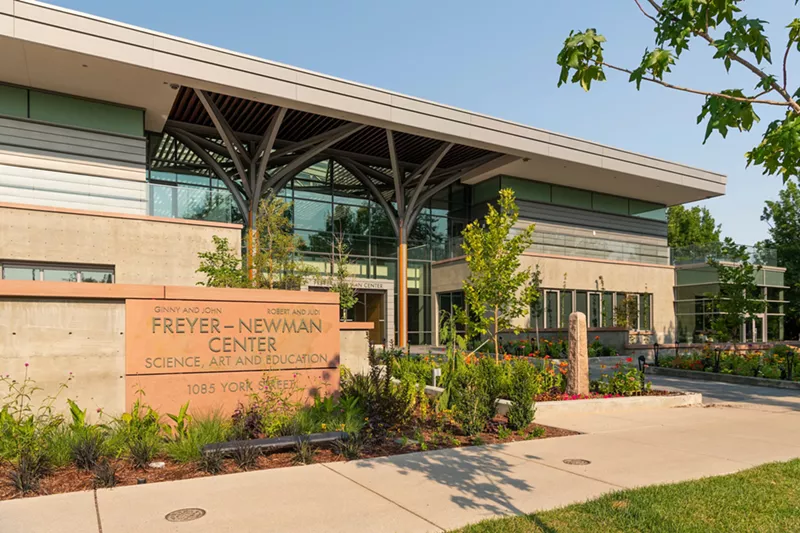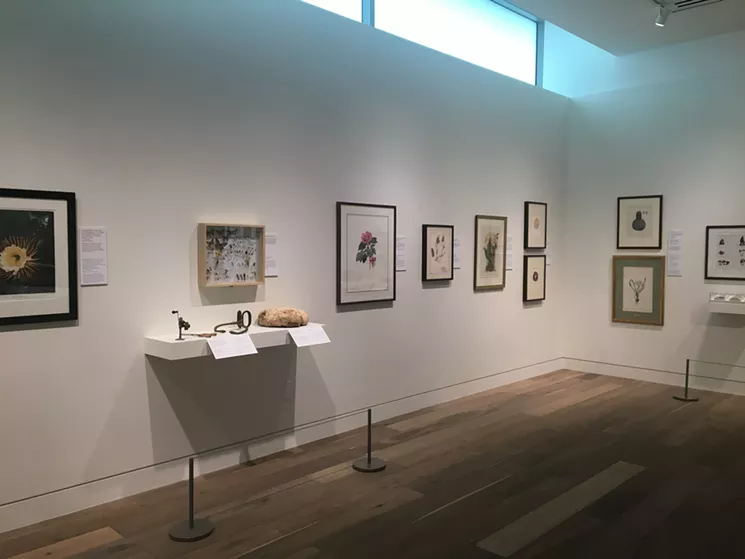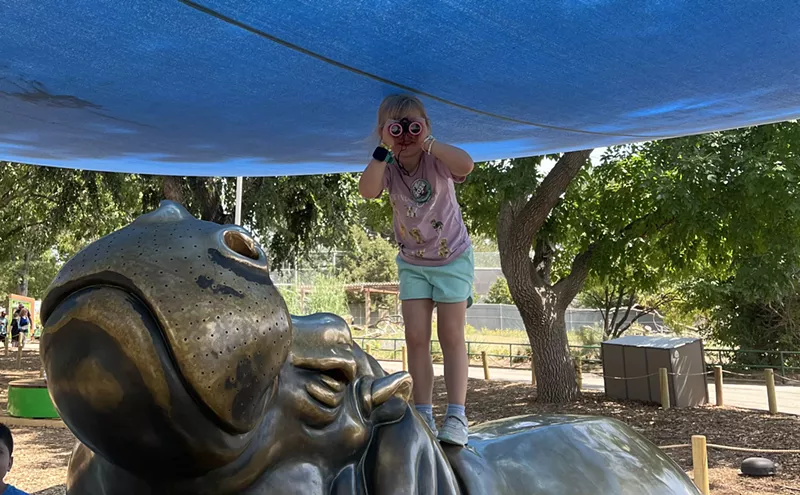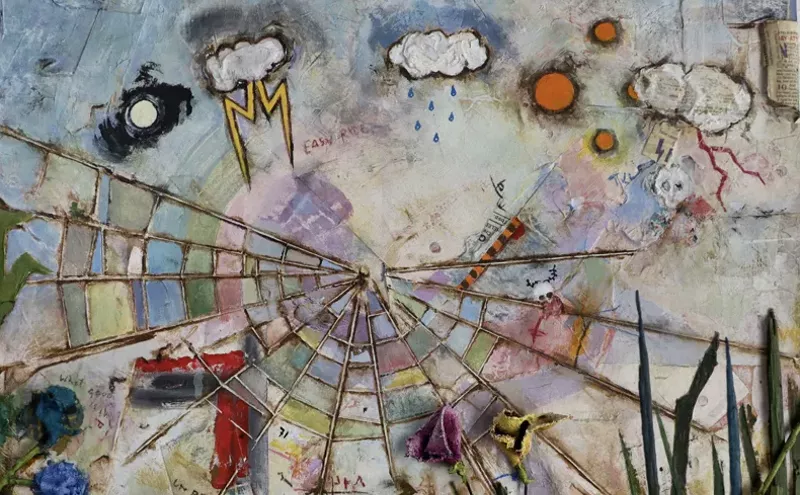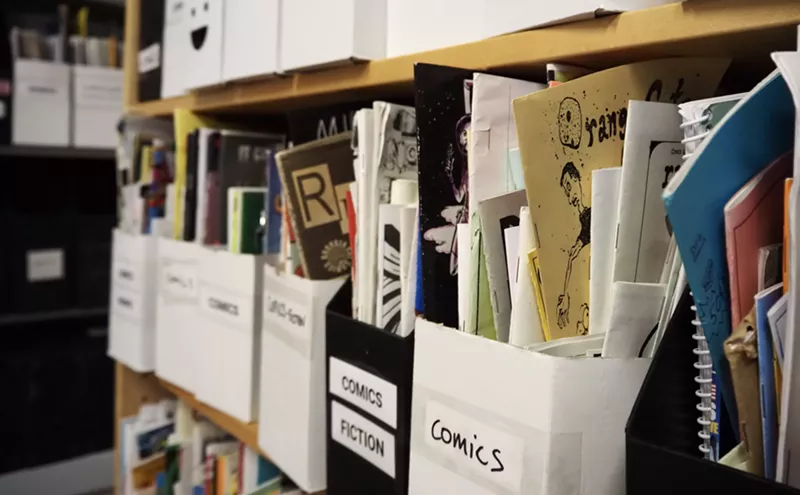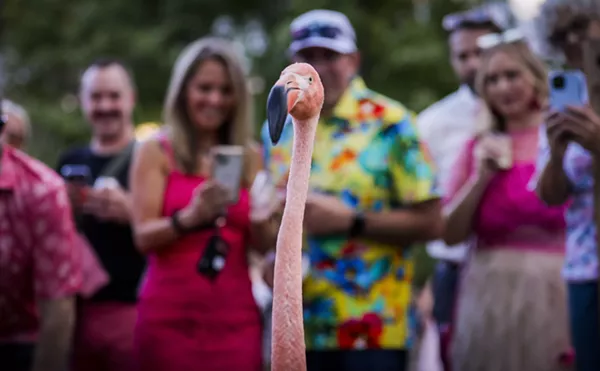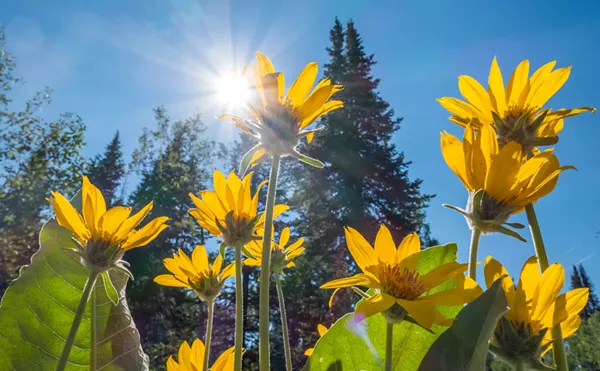The opening of the Freyer-Newman Center marks the last phase of an ambitious master plan created by Tryba Architects and carried out during Denver Botanic Gardens CEO Brian Vogt’s tenure, which began in 2007. The new building cost $40 million, while another $5 million was spent rehabbing the Boettcher Memorial Center. That was funded by private donors and the General Obligation Bond passed in Denver in 2017.
David Daniel, a principal at Denver’s Davis Partnership Architects, designed the Freyer-Newman Center. He is the mastermind behind 2019's zig-zagging Prism office building at 999 17th Street, which I named one of the ten best new buildings downtown.
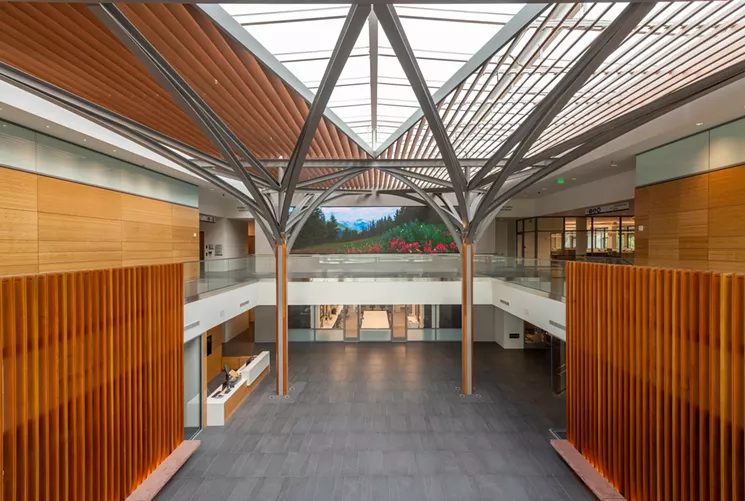
The atrium of the Freyer-Newman Center, with the structural supports based on the shape of conventionalized trees.
© Denver Botanic Gardens. Photo by Scott Dressel-Martin
The most obvious Hornbein-inspired elements to be employed in Daniel’s Freyer-Newman Center are the simplified tree shapes used as structural supports in front of the entrance and in the atrium, along with the juxtaposition of cast concrete to red limestone in the masonry walls. However, Daniel’s extensive use of glass curtain walls, divided into strictly horizontal/vertical grids, is a distinct departure from the existing Hornbein details.
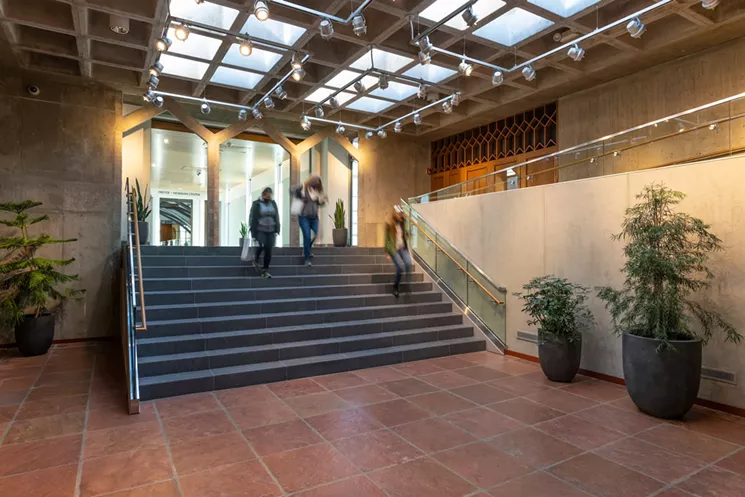
The staircase connecting the Boettcher Memorial Center to the sky bridge leading to the Freyer-Newman Center.
© Denver Botanic Gardens. Photo by Scott Dressel-Martin
At the top of a dark-gray stone staircase is an open gateway framed by three pointed arches. They’re part of the geometric tree motif Hornbein used, originally serving as the spines of a box window on the north side of the Boettcher. This gateway marks the place where the Boettcher ends and the sky bridge to the Freyer-Newman Center begins.
The new building, finished in the spring, offers four handsome exhibition spaces. Originally it was supposed to open this past summer with a blockbuster exhibition, The Contour of Feeling, dedicated to the work of internationally known New York sculptor Ursula von Rydingsvard. The show would have filled all four galleries, with an additional piece outside. After the pandemic forced the DBG to close, the Rydingsvard extravaganza was pushed back until 2022. That meant that Eldred and Tobias needed to conjure up first-rate exhibits in just a few months — and they did.
In the main gallery is From the Vault, an exhibit comprising pieces from the Denver Botanic Gardens' various collections, from rare books to dried fungi. In a smaller adjacent space is Garden & Haven, the annual botanical illustration show by the students from the on-site school. In another pair of conjoined galleries is Ghost Forest, a Melanie Walker solo made up of photographic images of logs and leaves on fabric, and Pink Lemonade Hope, a more intimate solo featuring the well-known heart-shaped prints adorned with the word “hope” or its Spanish translation, “esperanza," by Koko Bayer.
In addition to this set of galleries, the building also houses staff offices, an auditorium and six classrooms, which all have audio/video capacity, something that’s already come in handy in this time of remote learning. There is the handsomely appointed Helen Fowler Library, devoted to books about plants. And there are also state-of-the-art plant science laboratories and herbaria for plants, fungi and molds.
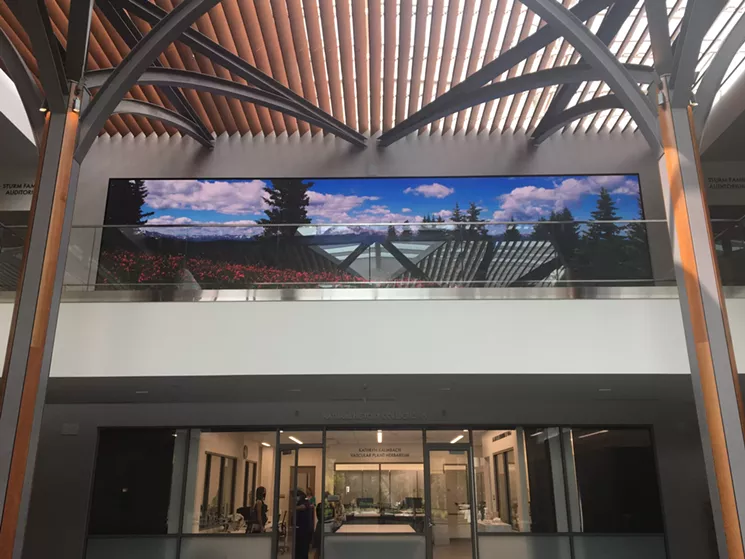
The ten-foot-by-forty-foot LED video panel on the floor above the glass wall of the laboratories in the atrium.
Robert Delaney
The whole place is intelligently thought out by architect Daniel and his team, making it the latest compelling attraction to have blossomed at the Gardens.
To see the Freyer-Newman Center, visitors must order timed tickets in advance at the Denver Botanic Gardens website. Masks and social distancing are required on site. As expected, there will be no opening reception.

